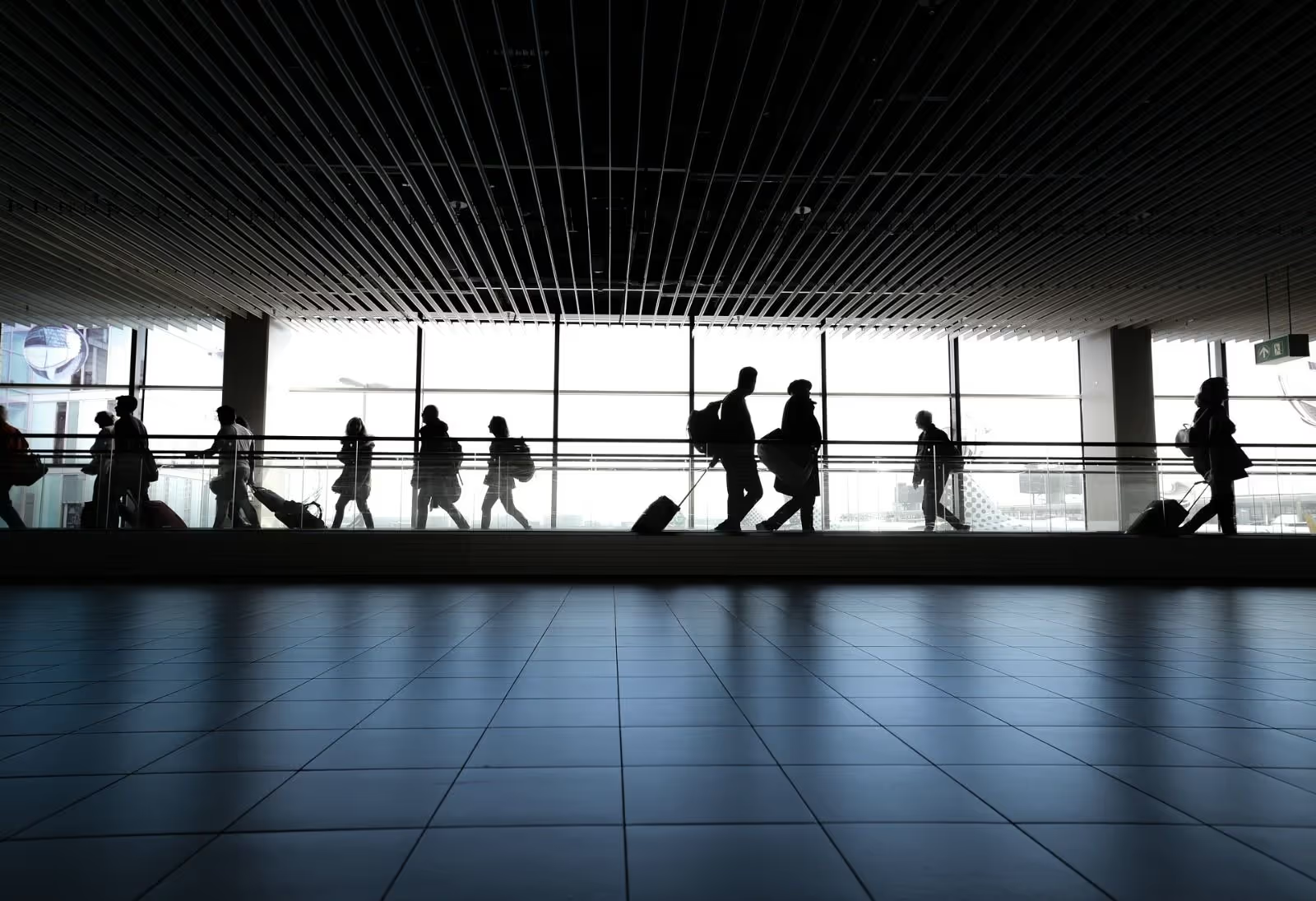The News
After nearly two decades of strict liquid limitations, European airports are finally beginning to scrap the infamous 100ml rule—but the rollout is creating more confusion than convenience for travelers. Birmingham Airport and Edinburgh Airport have already eliminated the previous restrictions, with passengers now able to carry up to 2 liters of liquids in their carry-on bags.
The changes are made possible by next-generation computed tomography (CT) security scanners that can reliably detect liquid explosives. However, the implementation is far from uniform across Europe, creating a patchwork of policies that varies not just between countries, but even between terminals at the same airport.
Key developments:
- Select airports now allow 2-liter liquid containers instead of 100ml
- Laptops and tablets can stay in bags at upgraded security checkpoints
- Major airports like Heathrow haven't upgraded due to massive costs
- Rules vary dramatically depending on which scanners airports installed
Similar changes are happening in the U.S., where the TSA is also considering ending liquid restrictions with updated scanner technology.
What's Changing
For Frequent European Travelers
You're entering an era of inconsistent policies that require careful planning. Airports with new CT scanners allow up to 2 liters of liquid, and passengers also shouldn't have to remove laptops or tablets from their carry-on luggage. But you'll need to research each airport's specific policies before traveling, as the rules can change dramatically between your departure and return airports.
If you travel internationally frequently, consider programs like TSA PreCheck or Global Entry for expedited U.S. security processing, or NEXUS for enhanced border crossing benefits between the U.S. and Canada.
For Occasional European Visitors
The safest approach remains assuming the old 100ml rules still apply. The advice to passengers remains unchanged: assume the 100ml rule unless explicitly told otherwise. This conservative strategy prevents unwanted surprises at security checkpoints.
For smoother airport experiences regardless of liquid rules, consider Clear+ for expedited security screening using biometric technology to skip regular security lines at major airports.
For Airport Operators
The decision to upgrade involves significant financial investment. Officials say it will cost more than $1 billion to equip all Heathrow checkpoints with the new scanners, explaining why adoption remains limited.
Background & Context
The 100ml liquid restriction was introduced in 2006 following a terrorist plot at London Heathrow Airport involving liquid explosives. For nearly 20 years, travelers have dutifully transferred toiletries into tiny containers and stuffed them into clear plastic bags.
New explosive detection systems are now available for cabin baggage, and these have now been installed in some EU airports - such as in Rome and Milan - which would enable passengers to carry larger liquid containers on board.
However, the European Commission's approach has been anything but smooth. The European Commission imposed a temporary restriction on the new liquid screening detection systems last summer, which meant the 100ml rule persisted. Only in July 2025 did the Commission approve certain scanner models for expanded liquid allowances.
The technology exists, but regulatory approval and massive implementation costs have slowed adoption. The EU originally hoped to eliminate liquid restrictions entirely by 2026, but that timeline now appears unrealistic.
Expert Analysis
Industry experts acknowledge both the promise and the challenges of the current rollout. "This is very good news for passengers, airports and security overall," director general Olivier Jankovec told Politico. Yet he noted the "partial outcome… leaves other manufacturers and airports equipped with their equipment in a vacuum".
The regulatory complexity compounds the confusion. According to the European Commission's official transport policy, by limiting approval to Smiths Detection, Brussels has sidelined airports that purchased Chinese-made Nuctech or American Rapiscan systems. These must now undergo fresh testing by the European Civil Aviation Conference (ECAC), followed by Commission sign-off – a process with no clear timeline.
Current data shows extremely limited implementation despite years of preparation. Major European hubs including Paris Charles de Gaulle, Amsterdam Schiphol, and London Heathrow continue operating under the old restrictions, meaning the vast majority of European travelers still face 100ml limits.
What This Means for Travelers
Winners
- Passengers using specific airports with approved CT scanners can finally pack normal-sized toiletries and bring that bottle of wine home
- Business travelers benefit from not removing laptops and tablets at upgraded checkpoints
- European residents traveling domestically may eventually enjoy consistent rules
- Travelers with TSA PreCheck equivalent programs already enjoy some of these benefits in the U.S.
Losers
- International travelers face unpredictable rule changes depending on departure/arrival airports
- Connecting passengers may encounter different rules at each airport during the same journey
- Budget-conscious travelers using smaller airports that haven't invested in new technology
- Families traveling with children who must navigate inconsistent security policies
How to Adapt Your Strategy
- Research before you travel: Check each airport's current liquid policy on their official website before departure. Don't assume consistency across your entire journey. Use travel booking platforms like CheapOAir that provide detailed airport information when booking European flights.
- Pack conservatively: Unless you're certain your departure airport allows larger liquids, stick with the 100ml rule. Consider investing in quality travel-sized containers for your essentials. Travelers who fly out of Birmingham with 2 liters of liquids may run into a problem when returning home if they fly out of, say, France or Spain, where the 100-milliliter rule may still be in place.
- Plan for inconsistency on connections: If you have connecting flights, prepare for the possibility that different rules apply at each airport. Consider packing a backup clear bag with 100ml containers following proven packing strategies.
- Leverage credit card benefits: Use airline status and credit card perks to minimize security hassles regardless of liquid rules. The Capital One Venture X card offers TSA PreCheck and Global Entry credits, plus Priority Pass lounge access to make airport experiences smoother.
- Consider security expediting services: Programs like Clear+ use biometric verification to speed through security checkpoints at major international airports, reducing the impact of inconsistent liquid policies.
Related Developments
The European liquid rule changes are part of broader security modernization efforts. Similar discussions are happening globally, with the TSA recently hinting at potential changes to U.S. liquid restrictions. Some airports are also implementing facial recognition and biometric technologies to streamline the security process.
Additionally, the EU's delayed ETIAS travel authorization system and ongoing discussions about standardized carry-on bag sizes suggest that 2025-2026 will be a period of significant change for European travel logistics. The European Commission continues working toward harmonized aviation security policies across member states.
Looking Ahead
The path forward remains unclear and likely lengthy. The Commission had initially hoped to scrap liquid limits entirely by 2026 under its Smart Security initiative. Tuesday's update suggests that timeline is slipping, with full harmonisation likely years away.
Expect continued fragmentation throughout 2025 as airports gradually upgrade their systems when budget permits. Major hubs like Heathrow may not implement changes until 2026 at the earliest, given the massive financial investment required.
The most realistic expectation is a slow, airport-by-airport transition over the next 3-5 years, with frequent policy updates and continued traveler confusion during the transition period.
Bottom Line
While some European airports now allow larger liquids, the implementation is so inconsistent that most travelers should continue following the 100ml rule unless specifically confirmed otherwise. This transition period will likely last several years, requiring careful research for each trip.
Related Resources
- Will TSA's Liquid Restrictions End Next? What Travelers Need to Know About the 3-1-1 Policy's Future
- Essential Carry-On Items for Comfortable Travel
- TSA PreCheck vs. Global Entry: Which is Better?
- TSA PreCheck Touchless ID: Your Face Is Your Ticket Through Security in 2025
- NEXUS Program: The Ultimate Guide to Fast Border Crossings and Airport Security
Frequently Asked Questions
Which European airports currently allow larger liquids?
Currently confirmed airports include Birmingham Airport, Edinburgh Airport, Milan Malpensa Terminal 1, and Rome Fiumicino (except flights to the US and Israel). According to The Points Guy's reporting, the list is gradually expanding as more airports receive regulatory approval.
Can I bring 2 liters of liquid on my return flight if my departure airport allows it?
Not necessarily. Travelers who fly out of Birmingham with 2 liters of liquids may run into a problem when returning home if they fly out of, say, France or Spain, where the 100-milliliter rule may still be in place. Always check your return airport's specific policies on their official websites.
Do I still need to remove electronics at airports with new scanners?
No, airports with approved CT scanners allow laptops and tablets to remain in carry-on bags during security screening, significantly speeding up the process. This benefit extends beyond liquid policy changes.
Why haven't all European airports upgraded their scanners?
The cost is prohibitive for many airports. Officials say it will cost more than $1 billion to equip all Heathrow checkpoints with the new scanners, and the EU isn't mandating the upgrades. Budget constraints and regulatory uncertainty have slowed adoption.
Should I pack differently for European travel in 2025?
Yes, but conservatively. Pack 100ml containers as backup even if your departure airport allows larger liquids, since connecting flights or return journeys may have different rules. Consider using a travel booking service that provides detailed airport security information.
When will all European airports allow larger liquids?
The EU originally targeted 2026 for complete implementation, but according to EU Perspectives analysis, that timeline is slipping, with full harmonisation likely years away. Expect a gradual transition over 3-5 years.















